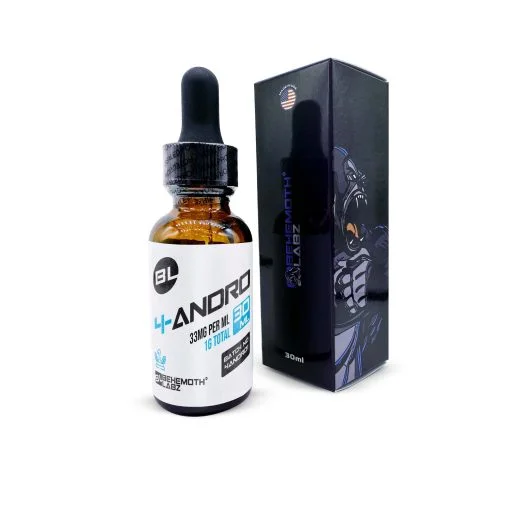Peptides
Tesamorelin vs Semaglutide: A Detailed Comparison
Tesamorelin and Semaglutide are the two crucial synthetic compounds. Although they share similarities, they differ in structure, function, and mechanism at their core. One is GHRH-releasing peptide, while the other is GLP-1 agonist.
Let’s delve into the nature, functions, similarities, and differences between Tesamorelin and Semaglutide. Read this blog and get an insight into Tesamorelin and Semaglutide!
What is Tesamorelin, and How Does It Work?
Tesamorelin is a synthetic peptide. It consists of 44 amino acid molecules and is an analog of the naturally occurring peptide hormone, Growth Hormone-Releasing Hormone (GHRH). Being an analog means it has a similar structure to that of GHRH. With a similar structure, Tesamorelin also exhibits properties identical to those of GHRH in research models.
According to animal model studies, Tesamorelin influences the pituitary gland and stimulates the secretion of growth hormones. The growth hormones, in turn, influence various pathways in research subjects. Some pathways it influences are related to muscle integrity, skeletal health, and lipolysis. Besides, it may also modulate IGF-1 secretion in research models.
What is Semaglutide, and How Does It Work?
Semaglutide is a synthetic peptide. It is also available with brand names, such as Ozempic and Wegovy, on the market. Research studies suggest that it is a GLP-1 (Glucagon-Like Peptide-1). It means Semaglutide binds with GLP-1 receptors in research models during clinical studies. After this binding, it may signal the modulation of GLP-1 hormones. The GLP-1 hormones, in turn, may accelerate patterns linked with insulin secretion in research subjects.
Insulin then modulates various pathways. For instance, it may influence the diabetic pathway, blood glucose indicators, and weight management mechanisms in experimental models during research studies.
Side-by-Side Comparison Between Tesamorelin and Semaglutide
Being peptides, Tesamorelin and Semaglutide are considered similar compounds. However, they differ in structure, mechanism of action, and potential benefits. To understand them deeply, let’s explain the key similarities and differences between them. Let’s have a look at them!
Key Similarities Between Tesamorelin and Semaglutide
Here is the list of key similarities between Tesamorelin and Semaglutide peptides:
- Peptide-Based Compound:
Both Tesamorelin and Semaglutide are synthetic peptides. They share similar properties and are designed to mimic the effects of hormones in research subjects during clinical trials.
- Hormonal Interaction:
Both interact with hormones in research models during laboratory research. Semaglutide interacts with GLP-1 receptors and stimulates the pathways related to GLP-1 hormones. On the other hand, Tesamorelin interacts with GHRH and modulates growth hormone secretion in research subjects in research trials.
- Weight Management Effects:
They exhibit weight management effects in research subjects during clinical trials. Tesamorelin may modulate the weight management mechanism by affecting insulin patterns. On the other hand, Semaglutide may influence weight via appetite suppression and insulin pathways.
- Injectable Administration:
They are both administered subcutaneously in research models during laboratory trials. Oral use of these compounds in the laboratory trials is not suggested, as taking them orally may alter the desired results.
- Research Use Only:
They are only used for laboratory research in a controlled environment. The FDA and WADA strictly prohibit human use of them.
Key Differences Between Tesamorelin and Semaglutide
Here is the list of key differences between Tesamorelin and Semaglutide:
- Primary Functions:
They differ in their primary functions. Tesamorelin’s primary function is to modulate growth hormone secretion in research subjects, which may also impact muscle hypertrophy and skeletal health. On the other hand, Semaglutide may affect GL-1 receptors, which are responsible for insulin secretion in research models. So, semaglutide’s primary function is to modulate glucose pathways in experimental models.
- Mechanism of Action:
Both Tesamorelin and Semaglutide differ in their mechanisms of action. Semaglutide may influence the pathways associated with insulin and GLP-1 secretion. Likewise, Tesamorelin may impact the biomarkers linked with growth hormones in research subjects.
- Effects on Hormones:
They differ in their effects on hormones. Studies have shown that Semaglutide influences the patterns linked with insulin and GLP-1. This means this compound does not affect growth hormone secretion in laboratory research models. On the other hand, Tesamorelin directly modulates growth hormone pathways during research trials.
- Differences in Side Effects:
They have different side effects. According to studies of Tesamorelin conducted on mice, the following side effects were observed: nausea, edema, and fatigue. Later on, these side effects were effectively managed by following proper guidelines and research protocols.
In another animal model study of Semaglutide, the side effects observed during the trials were different. For instance, animal models experienced nausea, stomach discomfort, and gastrointestinal tract issues during laboratory trials. Through following research protocols and paying proper attention to the trials, these side effects were also gradually minimized, contributing to the successful research results.
- Half-Life Difference:
Half-life refers to the time it takes for the concentration of a compound to decrease by half in the plasma or system. In this context, the half-life of Tesamorelin is less than an hour, while the half-life of Semaglutide extends to a week.
Which Peptide Is Better: Tesamorelin or Semaglutide
There are no universal parameters by which we can measure which one is the best option. Both are used for different purposes and have various mechanisms of action. If you want to explore the growth hormone modulation, then Tesamorelin is the best option for your clinical trials on research models. On the other hand, if you are looking for improved insulin patterns, then Tesamorelin is the top and recommended choice.
Now, the ball is in your court. After identifying your goals, objectives, and requirements, you must make a decision.
Legal Status
These peptides are legal for use in laboratories and research. Human consumption of these compounds is strictly prohibited. The human use of these peptides may lead to legal proceedings.
Final Thought
Semaglutide and Tesamorelin are two different synthetic peptides. Although they share some similarities, they differ in structure and function. Being peptides, their effects on weight management and research applications are the key similarities between them. Conversely, they respond to different hormones and have varying half-lives. While choosing between them, you must identify your research goals, objectives, and requirements. Then decide accordingly.
Frequently Asked Questions (FAQs)
What is the downside of Semaglutide during research trials?
According to clinical studies, the downside of Semaglutide is nausea, headache, vomiting, stomach discomfort, and gastrointestinal issues in research models.
What does Semaglutide do in research models in laboratory trials?
According to clinical studies, Semaglutide binds to GLP-1 receptors in animal models and stimulates the release of GLP-1 hormones. Such GLP-1 hormones, in turn, affect the indicators linked with insulin in research models. Insulin then modulates the pathways associated with weight management and glucose levels.
What is the best place to buy Semaglutide and Tesamorelin online?
The best place to buy semaglutide and tesamorelin peptides is BehemothLabz, where products are particularly developed for laboratory research. Moreover, the prices of compounds at BehemothLabz are reasonable and within the buying range. Similarly, BehemothLabz also delivers products nationally and internationally, crossing geographical borders.
What does Tesamorelin do in research models?
Tesamorelin influences the pituitary gland of research subjects during laboratory trials. Such influence may affect the patterns linked with growth hormones. In short, it indirectly influences the pathways associated with growth hormones in research subjects during clinical trials.
Does Tesamorelin work in research subjects during research trials?
Yes, tesamorelin has been shown to work in research subjects during clinical trials. It influences the patterns associated with growth hormone in research subjects and secretes it. The growth hormone secretion modulates various pathways in research subjects.












